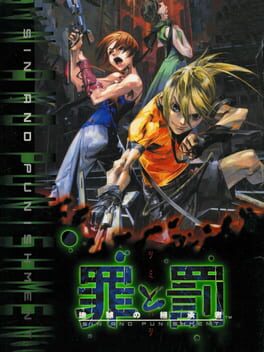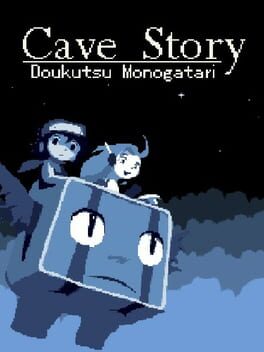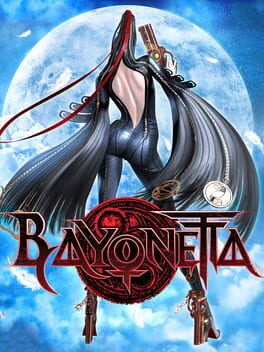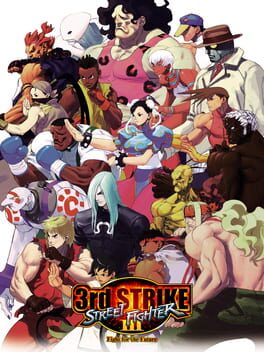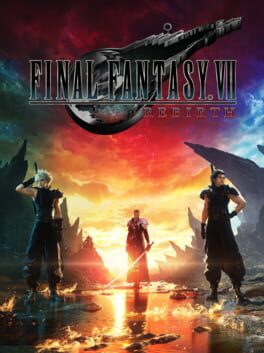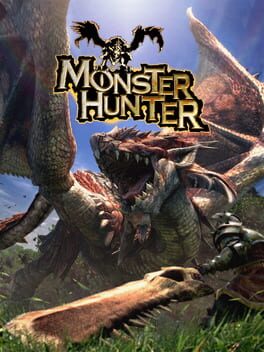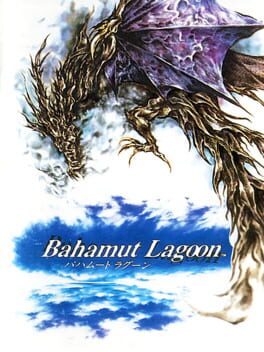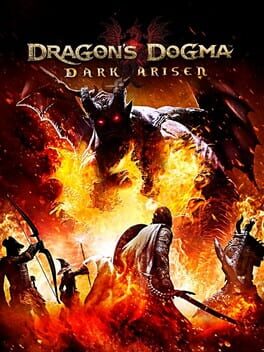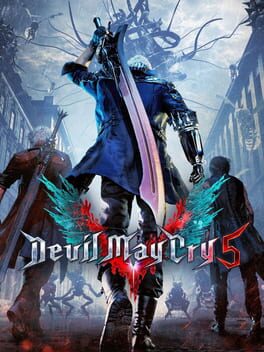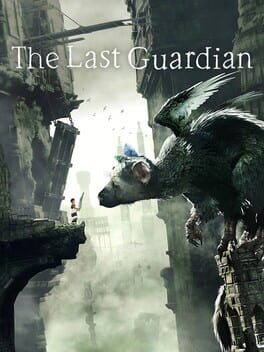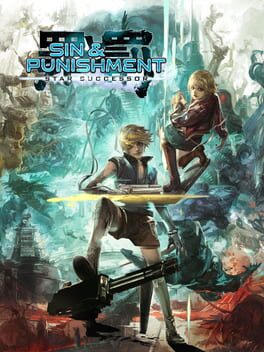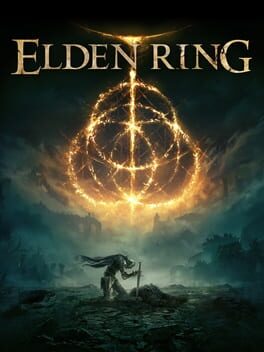XON
Bio
made 100 bands
made 100 bands
Badges

Gone Gold
Received 5+ likes on a review while featured on the front page

Popular
Gained 15+ followers

GOTY '23
Participated in the 2023 Game of the Year Event

Donor
Liked 50+ reviews / lists

Well Written
Gained 10+ likes on a single review

GOTY '22
Participated in the 2022 Game of the Year Event

Liked
Gained 10+ total review likes

Roadtrip
Voted for at least 3 features on the roadmap

2 Years of Service
Being part of the Backloggd community for 2 years

Shreked
Found the secret ogre page

Best Friends
Become mutual friends with at least 3 others

Gamer
Played 250+ games

Noticed
Gained 3+ followers

N00b
Played 100+ games
Favorite Games
429
Total Games Played
009
Played in 2024
132
Games Backloggd
Recently Played See More
Recently Reviewed See More
AI in video games exists to be predictable. Whether it is or isn’t on your side, its actions on first engagement have to be for the player to enact their intended objective in an area or level, and in the case of a companion, it’s all of their actions. Any unpredictability would only take place after its action is made clear, where the AI might consider any number of options that bounce off the game’s systems to follow up on their state inflicted by the player, but similar systems can also be used to better realize this AI as a character in their setting before any engagement. Trico ticks all the boxes, the difference is unpredictability’s been introduced into their initial response to the player.
And it’s not in the way that Trico will ignore what you tell them to do, but that the response is not instant. There’s no list of specific commands you can give to the beast, you can’t directly take control of it, and it won’t teleport to you if you’re too far. You can point to where you want it to go and call out if you want it to come to you. What this can promote in the dense setting of the Nest is situations that can make it hard for Trico to know exactly what you want, jumping ruined column to ruined column over a quiet fog is no problem, but getting on that first column might be. Chances are it was on the player for not positioning themselves clearly enough for Trico to see and hear, but sometimes it can be the creature’s fault. Every bit of gameplay alongside it becomes more than a choice to execute, it’s a moment for you and Trico to learn from, and this takes a unique weight off when you can get past an obstacle because you know you both worked through it together.
What starts as two creatures functioning on survival instinct becomes mutual understanding that codependence would be necessary for this survival, and eventually, a connection that’s so much more. Trico needs you to feed it barrels, to take spears out of its body and tend to the wounds, to take out stained glass eyes it’s afraid of and you need Trico to fight off the Nest’s guards, to climb and jump to places you’re too small to reach, and to dive deep to where you’re not able to swim. Interactions like these teem throughout the game on a micro and macro level, but there come to be gestures of affection like certain spots you can pet eliciting more endeared reactions, which in turn becomes less required as Trico starts to calm down quicker from your presence alone, or Trico perching up against where you went waiting for you to come back. It all forms a bond so deep that it’s motivating beyond the dissonant nature of the checkpoint and failstate to keep going, to avoid death lest my big feathery buddy be left behind.
From the boy’s perspective, it’s certainly the most minimalist amount of interaction a player’s had with the world of a Team Ico game. Puzzles are so abstracted that solutions more often come down to observations around the room or in timing than unique engine interactions and the little occasional engagement with combat you have is pointing to where you want Trico to shoot lightning. Of course, this props up the importance of the beast but it also makes the Nest that much more convincing as ruins reclaimed by nature’s elements as well as your place in it with other inhabitants. Previously Ico would have to concede to more gamey puzzle objects and Shadow of the Colossus plopped a HUD on the screen for health and stamina. Advancements in a purer gameplay direction are welcome, but what opposes it is the blatant handholding through tooltips for what seems like every button interaction right when you might’ve forgotten about them and narrated hints if you’ve been on a puzzle for too long. A regression from the expressive nature the team’s previous works lead you to solutions with but it’s fair enough for this one considering it’s by far their longest.
Ultimately, Team Ico, genDESIGN, whatever, their games are about relationships. Relationships that can be rife with conflict yet continue, but also that these relationships may form with a person or being you might not have expected. Whether your actions are to look after yourself or out of sympathy, it becomes an experience as invaluable and life defining as any other for the player’s character, if not more. Time and time again The Last Guardian delivers on these ideas in the story it seeks to tell and through its mechanics and systems that flourish by themselves, with enough care that it reframes the entire concept of AI and companions in the medium. Knowing the challenge of executing this game’s goal and “development hell” where release was only prolonged from Sony’s decision to move it to the PS4 from the PS3’s arcane architecture potentially warding off devs, it’s tough to tell if this will end up as influential as its predecessors. But that only stands to make it all the more special. I’ll miss you, Trico.
And it’s not in the way that Trico will ignore what you tell them to do, but that the response is not instant. There’s no list of specific commands you can give to the beast, you can’t directly take control of it, and it won’t teleport to you if you’re too far. You can point to where you want it to go and call out if you want it to come to you. What this can promote in the dense setting of the Nest is situations that can make it hard for Trico to know exactly what you want, jumping ruined column to ruined column over a quiet fog is no problem, but getting on that first column might be. Chances are it was on the player for not positioning themselves clearly enough for Trico to see and hear, but sometimes it can be the creature’s fault. Every bit of gameplay alongside it becomes more than a choice to execute, it’s a moment for you and Trico to learn from, and this takes a unique weight off when you can get past an obstacle because you know you both worked through it together.
What starts as two creatures functioning on survival instinct becomes mutual understanding that codependence would be necessary for this survival, and eventually, a connection that’s so much more. Trico needs you to feed it barrels, to take spears out of its body and tend to the wounds, to take out stained glass eyes it’s afraid of and you need Trico to fight off the Nest’s guards, to climb and jump to places you’re too small to reach, and to dive deep to where you’re not able to swim. Interactions like these teem throughout the game on a micro and macro level, but there come to be gestures of affection like certain spots you can pet eliciting more endeared reactions, which in turn becomes less required as Trico starts to calm down quicker from your presence alone, or Trico perching up against where you went waiting for you to come back. It all forms a bond so deep that it’s motivating beyond the dissonant nature of the checkpoint and failstate to keep going, to avoid death lest my big feathery buddy be left behind.
From the boy’s perspective, it’s certainly the most minimalist amount of interaction a player’s had with the world of a Team Ico game. Puzzles are so abstracted that solutions more often come down to observations around the room or in timing than unique engine interactions and the little occasional engagement with combat you have is pointing to where you want Trico to shoot lightning. Of course, this props up the importance of the beast but it also makes the Nest that much more convincing as ruins reclaimed by nature’s elements as well as your place in it with other inhabitants. Previously Ico would have to concede to more gamey puzzle objects and Shadow of the Colossus plopped a HUD on the screen for health and stamina. Advancements in a purer gameplay direction are welcome, but what opposes it is the blatant handholding through tooltips for what seems like every button interaction right when you might’ve forgotten about them and narrated hints if you’ve been on a puzzle for too long. A regression from the expressive nature the team’s previous works lead you to solutions with but it’s fair enough for this one considering it’s by far their longest.
Ultimately, Team Ico, genDESIGN, whatever, their games are about relationships. Relationships that can be rife with conflict yet continue, but also that these relationships may form with a person or being you might not have expected. Whether your actions are to look after yourself or out of sympathy, it becomes an experience as invaluable and life defining as any other for the player’s character, if not more. Time and time again The Last Guardian delivers on these ideas in the story it seeks to tell and through its mechanics and systems that flourish by themselves, with enough care that it reframes the entire concept of AI and companions in the medium. Knowing the challenge of executing this game’s goal and “development hell” where release was only prolonged from Sony’s decision to move it to the PS4 from the PS3’s arcane architecture potentially warding off devs, it’s tough to tell if this will end up as influential as its predecessors. But that only stands to make it all the more special. I’ll miss you, Trico.
At the heart of Sin & Punishment is an undying dedication to emergence. Over time, the game demands more control over the player’s movement and the ability to aim properly has to adapt in response. It throws enemies, levels, bosses, and plenty of balls of energy at the player that take well advantage of this design. Everything falls into place, culminating to produce an experience like no other.
Naturally, Star Successor is an experience like one other, and it isn't nearly as emergent. But it feels deliberate, acknowledging that an attempt to recreate that beautiful curve of d-pad/joystick action would miss the novelty of it, given most people playing would’ve long since experienced the N64 game. Not to say this sequel brings nothing new to the table, far from it in every fashion. The player is now granted full control over movement in the Y axis, seemingly the next logical step after the point of control the original left off on. Star Successor lets far more loose creatively, coming off as a collection of insane, tightly designed levels, being less concerned with how it’s experienced as a whole. An increase in difficulty was clearly intended though, which is where this iteration’s closer focus on bullet hell comes in. This factor is not a main appeal, which is obvious given how much of it can be dodged through. Like any game with interesting gameplay, it pushes a lot of different scenarios gone about in ways unique from each other. This was present in the original through what I mentioned previously, but the scenarios feel much grander and bolder in the successor, independent of controls. It’s shown best through the bosses, one fight’ll be unhooking train carts across three lanes to impact the tailing enemy, another’ll be shooting at two platforms to move them upward while keeping them balanced to lead the boss into lava. Though that’s a small sample, it should clue you in on the range of crazed situations the game sets up.
To be a sequel is to be compared to what preceded, and Star Successor does its best to iterate on the formula left behind while ironing out some nuisances (timer) of the first game. To be a sequel is also to contrast itself from what preceded, and Star Successor succeeds in this regard as well, offering up plenty more newness mechanically, aesthetically, and in the content itself that makes it quite distinct from the original. Playable on its own, but it’s only enhanced by being aware of what came before. A gem of a successor. A true star of a sequel.
Naturally, Star Successor is an experience like one other, and it isn't nearly as emergent. But it feels deliberate, acknowledging that an attempt to recreate that beautiful curve of d-pad/joystick action would miss the novelty of it, given most people playing would’ve long since experienced the N64 game. Not to say this sequel brings nothing new to the table, far from it in every fashion. The player is now granted full control over movement in the Y axis, seemingly the next logical step after the point of control the original left off on. Star Successor lets far more loose creatively, coming off as a collection of insane, tightly designed levels, being less concerned with how it’s experienced as a whole. An increase in difficulty was clearly intended though, which is where this iteration’s closer focus on bullet hell comes in. This factor is not a main appeal, which is obvious given how much of it can be dodged through. Like any game with interesting gameplay, it pushes a lot of different scenarios gone about in ways unique from each other. This was present in the original through what I mentioned previously, but the scenarios feel much grander and bolder in the successor, independent of controls. It’s shown best through the bosses, one fight’ll be unhooking train carts across three lanes to impact the tailing enemy, another’ll be shooting at two platforms to move them upward while keeping them balanced to lead the boss into lava. Though that’s a small sample, it should clue you in on the range of crazed situations the game sets up.
To be a sequel is to be compared to what preceded, and Star Successor does its best to iterate on the formula left behind while ironing out some nuisances (timer) of the first game. To be a sequel is also to contrast itself from what preceded, and Star Successor succeeds in this regard as well, offering up plenty more newness mechanically, aesthetically, and in the content itself that makes it quite distinct from the original. Playable on its own, but it’s only enhanced by being aware of what came before. A gem of a successor. A true star of a sequel.
Elden Ring is a grip-testing arcade cabinet, gradually becoming so as a vast sea of content that spikes in its pull away from you to hold on, while remaining utterly static. The first time you play on one of these machines you're presented with what feels like a new experience, and yet the way the game moves along could only lead to frustration.
By these stripped-back ideas these two experiences could be quite similar, but the reason for my frustration with Elden Ring is nothing like one of petty perseverance I would have with a grip-testing game. Elden Ring didn't upset me with an unnecessary abundance of content, reused or reskinned bosses, or the game not fulfilling any preconceived expectations, I was upset realizing its opening to be an elaborate masquerade. A world of several paths you can choose yourself is an idea untapped by Fromsoft since Dark Souls, and while those paths' intertwining nuance was sacrificed, it sounded enticing to have that “go anywhere” approach return for an entry. However, I didn’t think I’d find myself begging for another linear world by my journey’s end. If Sekiro spread itself too thin, Elden Ring’s done it at molecular scale. The open world ruse lends itself well, the overworld appears strikingly different from its contemporaries with a gorgeous mix of starkly colored skies and foliage, yet you walk inside anywhere and you’ve been aesthetically dropped back into a Dark Souls game. Play enough and eventually recognize the overworld doesn’t do the game any favors either.
I can say the first bit of Limgrave felt new to traverse, but the game has nothing else to offer after a point. It’s to an extent where I can also say with certainty you could be dropped at the start in any of the other regions, with level scaling and other progressions adjusted of course, and be similarly enamored. Witness enemied encampments battle it out, hop a gust of wind with Torrent and be taken in by the Erdtree’s gleam, fight a dragon, or take your steed up or down gravestone platforms jutting out of a hillside. These examples are only a fraction of Elden Ring’s attractions and are all present multiple times in multiple regions, with their repeated instances being equally uninteresting as you’re given one way to approach each obstacle. Approach anything whenever you want, but the “why” and “how” were left out to dry. Perhaps it was made to be this way to assure the player can experience them at least once and won’t miss out, but if missing anything was of concern then having an open world at all should be reconsidered. Either way, these once-special encounters are done so frequently that it’s surely chalked up to laziness. Exceptions exist of course, the temple-like levels you can find in the catacombs made them some of the most fun to figure out and were varied enough, despite their copy and paste interior design.
The height of my enjoyment with Elden Ring was in its legacy dungeons, though it mostly had to do with the way you move around these setpieces – Stormveil Castle, Leyndell, and Crumbling Farum Azula being of note. Even so, it’s clear some intricacy in these areas was put to the wayside. It’s unfortunate the reward for making it through them are such dull bosses. In fact, it seems all the worst tropes of Fromsoft’s boss design have sprung to the helm of this title. Even further delayed telegraphing, longer multi-hit attacks, areas of effect where you can only rely on the invincibility frames of the roll, exclusively flat arenas, ridiculous second phases, etc. You'd have a hard time finding a main boss in this game that isn't supplemented with two or more of these traits.
Elden Ring doesn’t want to be anything more than its label, it’s close to nothing. At least I got to be mystified for a few hours before seeing that.
By these stripped-back ideas these two experiences could be quite similar, but the reason for my frustration with Elden Ring is nothing like one of petty perseverance I would have with a grip-testing game. Elden Ring didn't upset me with an unnecessary abundance of content, reused or reskinned bosses, or the game not fulfilling any preconceived expectations, I was upset realizing its opening to be an elaborate masquerade. A world of several paths you can choose yourself is an idea untapped by Fromsoft since Dark Souls, and while those paths' intertwining nuance was sacrificed, it sounded enticing to have that “go anywhere” approach return for an entry. However, I didn’t think I’d find myself begging for another linear world by my journey’s end. If Sekiro spread itself too thin, Elden Ring’s done it at molecular scale. The open world ruse lends itself well, the overworld appears strikingly different from its contemporaries with a gorgeous mix of starkly colored skies and foliage, yet you walk inside anywhere and you’ve been aesthetically dropped back into a Dark Souls game. Play enough and eventually recognize the overworld doesn’t do the game any favors either.
I can say the first bit of Limgrave felt new to traverse, but the game has nothing else to offer after a point. It’s to an extent where I can also say with certainty you could be dropped at the start in any of the other regions, with level scaling and other progressions adjusted of course, and be similarly enamored. Witness enemied encampments battle it out, hop a gust of wind with Torrent and be taken in by the Erdtree’s gleam, fight a dragon, or take your steed up or down gravestone platforms jutting out of a hillside. These examples are only a fraction of Elden Ring’s attractions and are all present multiple times in multiple regions, with their repeated instances being equally uninteresting as you’re given one way to approach each obstacle. Approach anything whenever you want, but the “why” and “how” were left out to dry. Perhaps it was made to be this way to assure the player can experience them at least once and won’t miss out, but if missing anything was of concern then having an open world at all should be reconsidered. Either way, these once-special encounters are done so frequently that it’s surely chalked up to laziness. Exceptions exist of course, the temple-like levels you can find in the catacombs made them some of the most fun to figure out and were varied enough, despite their copy and paste interior design.
The height of my enjoyment with Elden Ring was in its legacy dungeons, though it mostly had to do with the way you move around these setpieces – Stormveil Castle, Leyndell, and Crumbling Farum Azula being of note. Even so, it’s clear some intricacy in these areas was put to the wayside. It’s unfortunate the reward for making it through them are such dull bosses. In fact, it seems all the worst tropes of Fromsoft’s boss design have sprung to the helm of this title. Even further delayed telegraphing, longer multi-hit attacks, areas of effect where you can only rely on the invincibility frames of the roll, exclusively flat arenas, ridiculous second phases, etc. You'd have a hard time finding a main boss in this game that isn't supplemented with two or more of these traits.
Elden Ring doesn’t want to be anything more than its label, it’s close to nothing. At least I got to be mystified for a few hours before seeing that.

